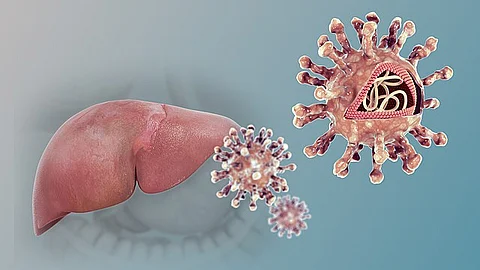Regional Variations in the Incidence
The burden of viral hepatitis varies significantly across regions, with certain areas facing excessive challenges. For instance, the WHO African Region bears 63% of new hepatitis B infections, yet only 18% of newborns in the region receive the hepatitis B birth-dose vaccination. In contrast, the Western Pacific Region accounts for 47% of hepatitis B deaths.
Moreover, treatment coverage remains insufficient in many regions. For example, in the Western Pacific Region, treatment coverage stands at only 23% among diagnosed individuals, far below the level needed to reduce death rates.
Personalized strategies and increased efforts are required to address these geographical differences, especially in areas where the incidence of viral hepatitis is high. In order to be in compliance with the global health targets, priority nations must have universal access to prevention, diagnosis, and treatment by 2025.
Pricing and service delivery challenges
Despite the availability of affordable generic medicines for viral hepatitis, many countries struggle to get them at lower prices. Pricing disparities persist both across and within WHO regions, with some countries paying above global demands for essential drugs.
For impacted groups, service delivery is still frequently vertical and centralized. In addition, many people still find it challenging to pay for viral hepatitis services out of pocket.
Only 60% of reporting countries offer viral hepatitis testing and treatment services free of charge in the public sector, highlighting the need for improved financial protection, especially in regions like the WHO African Region.
Recommendations for Accelerating Hepatitis Elimination
The WHO's report outlines several key recommendations to accelerate progress towards ending the hepatitis epidemic by 2030. These include expanding access to testing and diagnostics, shifting from policies to implementation for reasonable treatment, and strengthening primary care prevention efforts.
It is also stressed that facilitating innovative financing, reducing product regulation and supply, and optimizing service delivery are crucial approaches. The suggested strategy also calls for involving impacted communities and civil society and increasing research for better hepatitis B diagnosis and possible treatments.
Funding Limitations
The report's requirements are not completely met by the funding for viral hepatitis, either globally or within specific national health budgets. These financing limitations are the cause of incompatible goals on global health agendas and a lack of knowledge on cost-saving initiatives and tools.
The study emphasizes how critical it is to resolve these gaps and provide access to resources at the lowest possible price. Developing investment cases in priority nations and employing creative finance methods to help hepatitis elimination initiatives are two methods to handle financial challenges.
(Input from various resources)
(Rehash/Susmita Bhandary/MSM)


